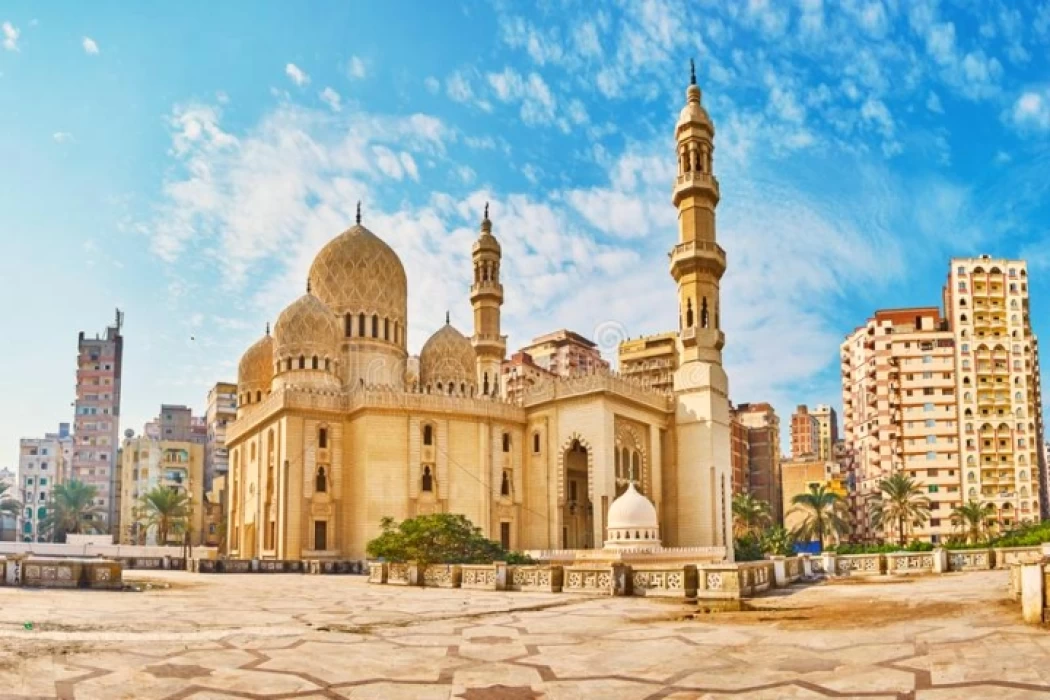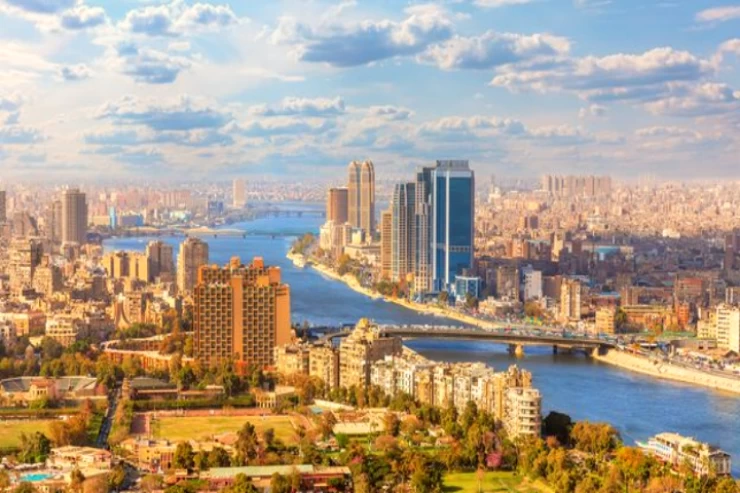
El Attarine mosque
There were only two mosques in Alexandria, the Eastern Mosque (the Attarin Mosque). And the Western Mosque (which is the mosque built by Amr Ibn Al-Aas and known by his name). At the beginning of the Fatimid era, parts of the mosque were demolished. Some of its parts collapsed, its roofs were sold, and it suffered severe damage, losing most of its features. In the year 477 A.H., the Emir of the Armies, Badr al-Din al-Jamali, came to Alexandria to quell the revolt that his eldest son had staged, and he was called "the only one Abu al-Hasan," and he was nicknamed Muzaffar al-Dawla. Her family asked him for safety and opened the door for him. So he entered Alexandria, taking his son as a captive. And he spent the money that he imposed on the people of Alexandria on its construction and he performed Friday prayers in it.
The Attarin Mosque continued as a congregational mosque, i.e. gatherings were held in it until the Fatimid dynasty came to an end at the hands of Salah al-Din al-Ayyubi, who ordered the construction of another mosque to which he transferred the sermon from the Attarin Mosque. After that, the Attarin Mosque was neglected and suffered some damage, as some of its columns fell around the year 772 AH. In the year 773 AH, the Al-Attarin Mosque was restored and what was destroyed from it was repaired, but it did not receive sufficient care in the Mamluk and Ottoman eras.. so its walls cracked and its roof collapsed again. In 1901 AD, Khedive Abbas Helmy II ordered the renovation of the Attarin Mosque. Nothing remained after the building of the new mosque from the old mosque except for the plaque on which the date of the foundation of the mosque was recorded in the era of Badr al-Din al-Jamali and written on it
“In the name of God, the Most Compassionate, the Most Merciful. The mosques of God are only inhabited by those who believe in God and the Last Day, establish prayer, pay zakat, and fear nothing but God.”
He commanded its construction, the eminent emir of the armies, Saif al-Islam, Nasir al-Imam, sponsor of Muslim judges and the guide of the preachers of the believers, Abu al-Najm Badr al-Mustansari, when his passengers came to Alexandria, and he saw this mosque in ruins.
The travelers described this mosque and pointed to its regular shape and its inner courtyard, in which the colors of the gates circulate. Ter Willow mentioned in the year 1669 AD that a high minaret stood on each of its four corners. The book Description of Egypt is a description of the wonderful decorations engraved in marble and granite and painted with mosaics. The current mosque consists of a rectangular area that looks triangular from the outside, where the top of the triangle from the outside on the southeastern side is the minaret block. The mosque has two façades, the northeastern façade, which is the main façade, and the main entrance to the mosque is located in it, which is located at the northern end of the façade.
The mosque consists of two floors from the inside. The ground floor is dedicated to men’s prayers, while the first floor is reserved for women. At the eastern end of the mosque’s façade, there is another entrance that leads to the shrine’s dome. This text has been written above this entrance.
"This is the tomb of Sidi Muhammad bin Suleiman bin Khalid bin Al-Walid... it was renewed in 1319"
As for the southwestern façade, there is a group of shops that were endowed on the mosque to spend their revenues on it. At the western end of the façade is another entrance that leads to the mosque's kindergarten, surmounted by this inscription
"This blessed mosque was renewed during the era of the Khedive of Egypt, Abbas Helmy, may God perpetuate his days in the year 1319 AH"
The balconies of the mosque are crowned from the highest row of balconies in the form of a seven-lobed plant leaf. On the southwestern side of the prayer house, there is a door opening that leads to the mosque’s kindergarten, which is an open rectangular space in which some trees have been planted. The walls are tiled with faience painted in beautiful colors.
The mosque and many more attractions in Alexandria can be done during one of Egypt Luxury tours that allows you to stay at the most outstanding hotels and Nile cruises or if you are traveling with a small amount of money and would like to save your time and expenses you can check our wide variety of Egypt cheap budget tours packages, if you have been on an accident and suffer from a physical injury don't ever worry because our professional operators customized a collection of Egypt wheelchair accessible tours packages that use all the accessible vehicles and different facilities for disabled people which is one of the main categories of our Egypt classic tours.















